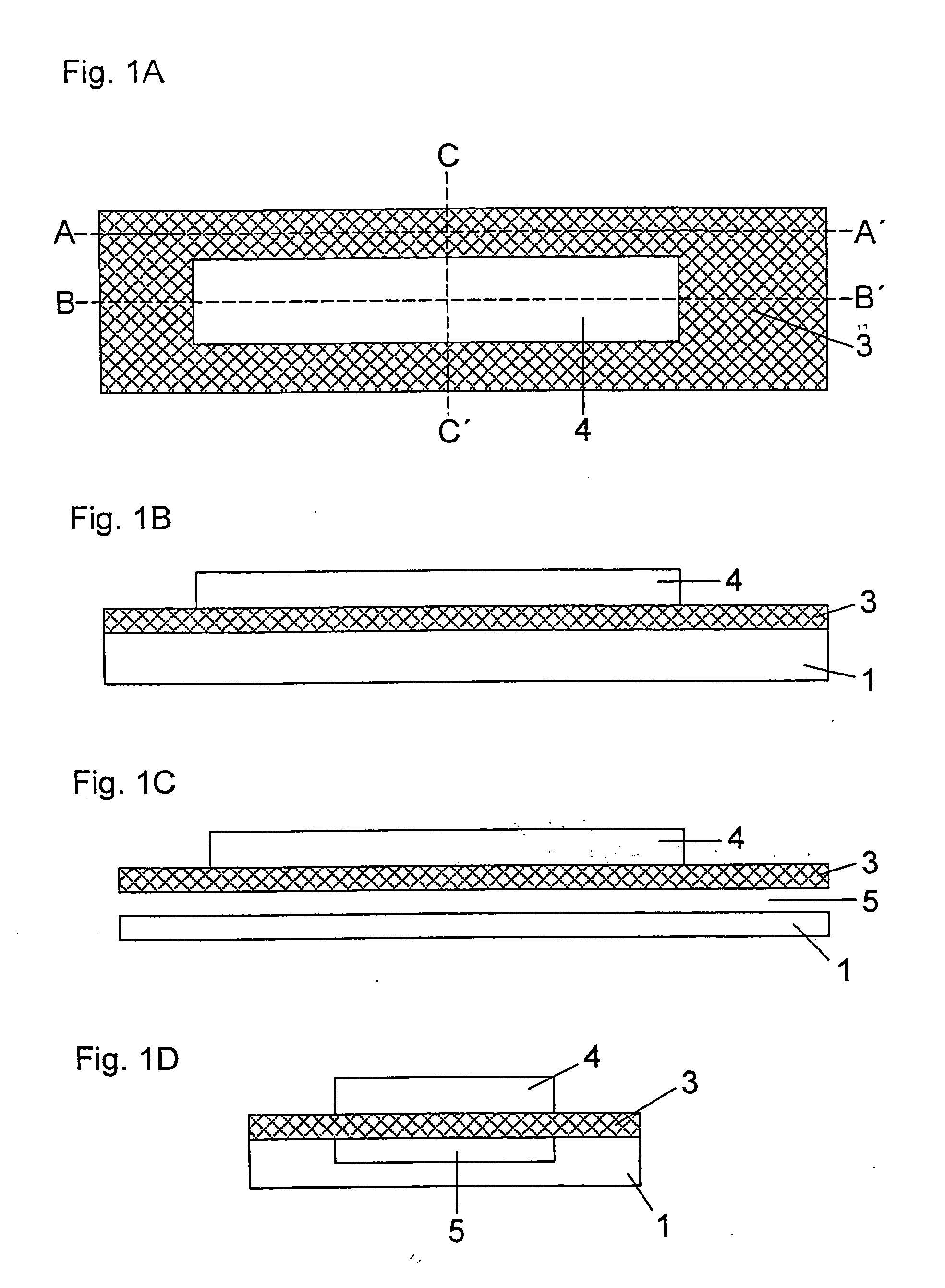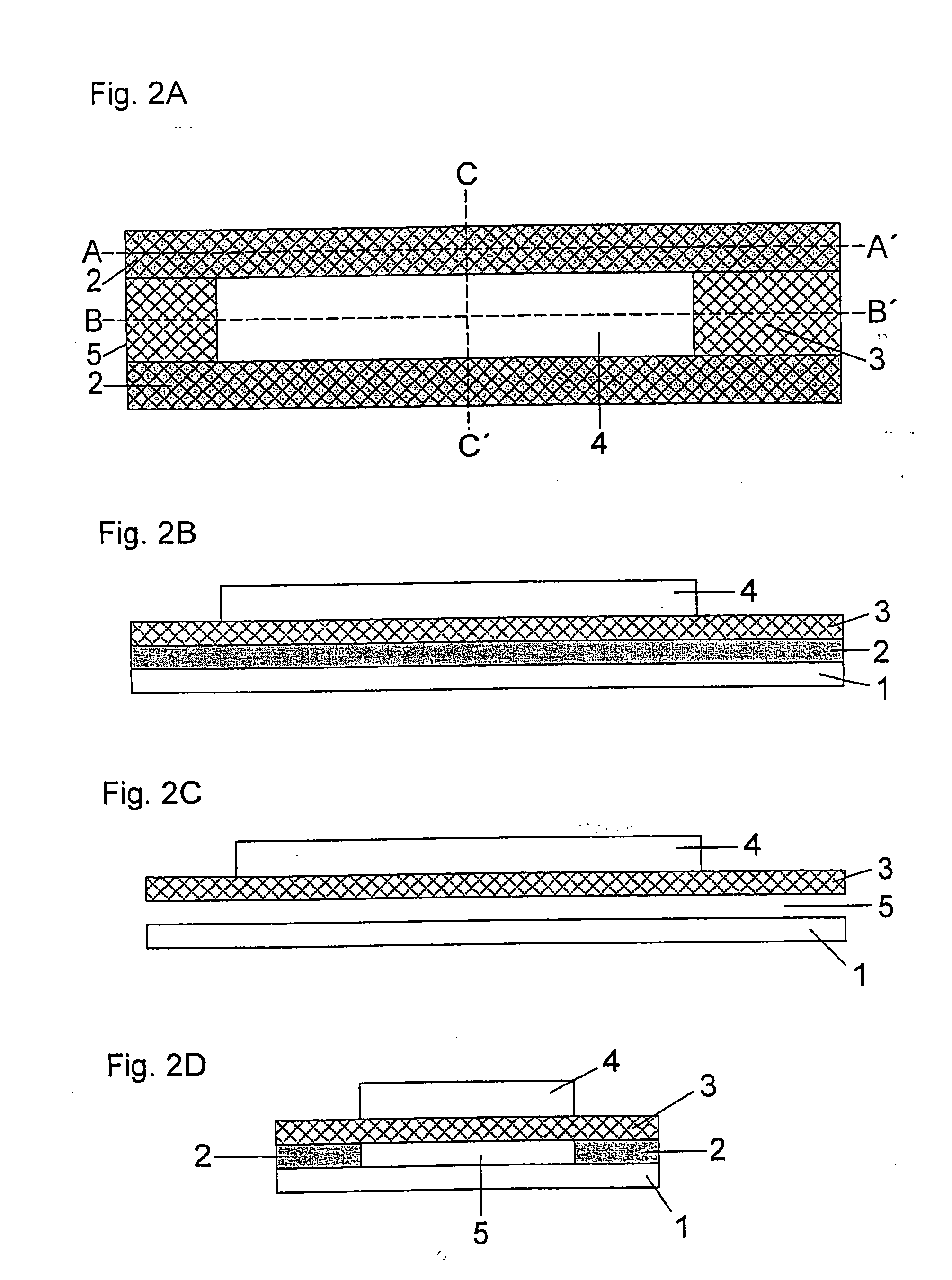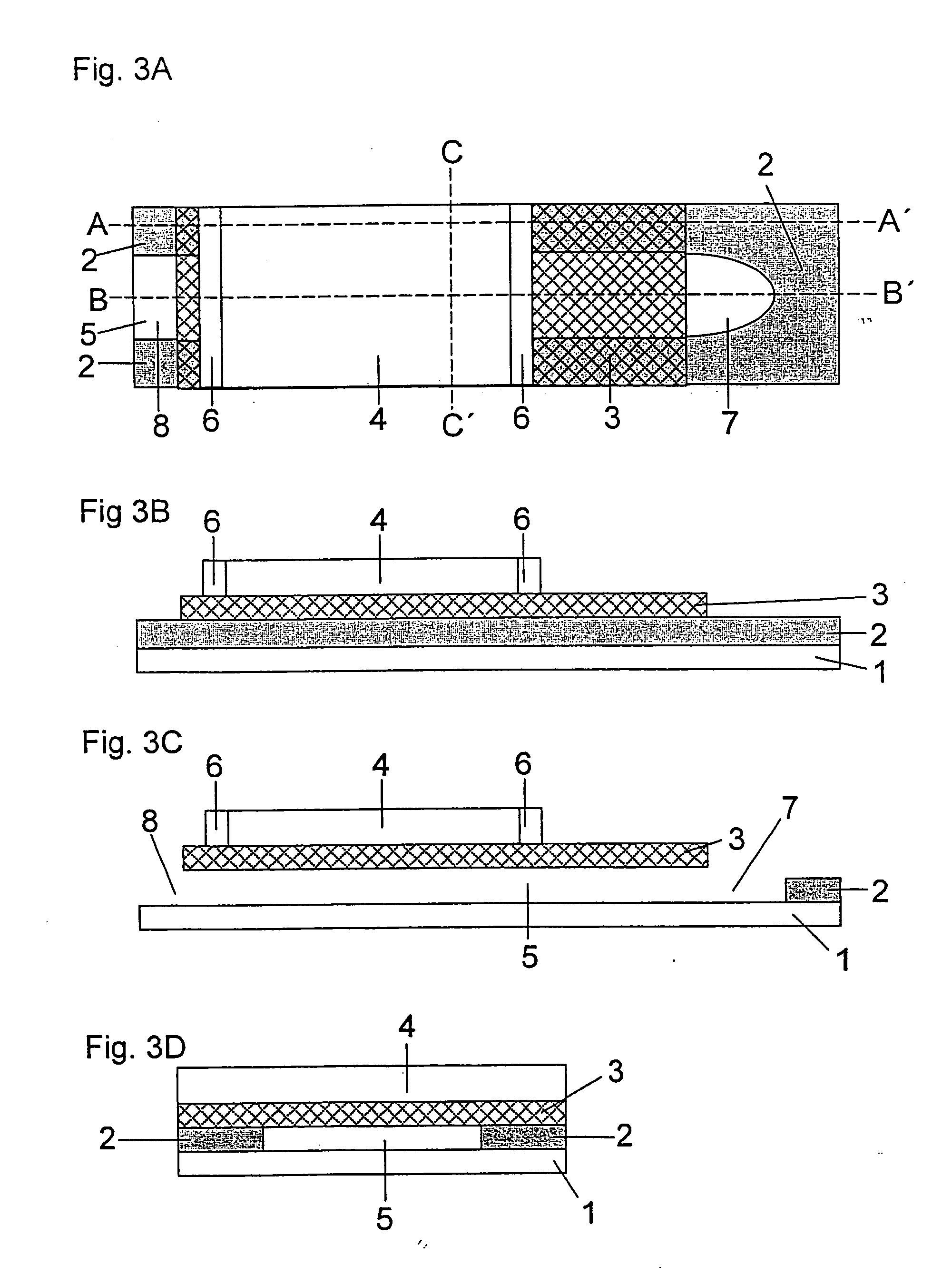Analytical test element
a technology of analytical test elements and test elements, applied in the direction of analytical glassware, instruments, and analyses using chemical indicators, can solve the problems of difficult to achieve volumetric metering in these test elements, unfavorable uniformity of transport rate, and blood collection all the more painful for patients, so as to achieve economical and technical simple manufacture, the effect of simple operation
- Summary
- Abstract
- Description
- Claims
- Application Information
AI Technical Summary
Benefits of technology
Problems solved by technology
Method used
Image
Examples
example 1
Production of an Analytical Test Element (cf. FIG. 4)
[0097] A double-sided adhesive tape having a thickness of 200 μm is glued a few millimetres from the edge onto a 350 μm thick support foil made of polyethylene terephthalate (Melinex®, ICI, Frankfurt am Main, Germany) which was previously hydrophilized by treatment with dioctyl sodium sulfosuccinate (2% in ethanol, Merck KgaA, Darmstadt, Germany). The support foil has a length of 75 mm and a width of 5 mm. The adhesive tape has a length of 35 mm and also a width of 5 mm. In addition, one end of the adhesive tape which corresponds to the subsequent vent hole has a central punched hole of 2 mm width and 15 mm to 25 mm length which defines the dimensions of the capillary channel. A specially shaped sample application area typically adjoins the side of the punched hole opposite to the vent hole. This is formed by an oval punched hole of 6 mm length and 3 mm width. The length of the punched hole can be selected to be slightly larger t...
example 2
Measurement of Lipid Parameters with the Aid of the Test Element From Example 1
[0098] The sample application area of the test element from Example 1 is contacted with one drop of blood. The capillary of the test element automatically and uniformly fills with sample liquid within 3-5 seconds. In the areas of the detection elements the sample liquid flows across the network essentially simultaneously into the detection elements which starts the respective detection reaction. A colour development in the detection element is visible within a few seconds which can be used after completion of the measuring time to determine the analyte. This measuring time is, for example, about 135 sec. for a HDL cholesterol determination according to the Reflotron® HDL cholesterol method, about 135 sec. for a cholesterol determination according to the Reflotron® cholesterol method, and about 180 sec. for a triglyceride determination according to the Reflotron® triglyceride method. The intensity of the ...
PUM
 Login to View More
Login to View More Abstract
Description
Claims
Application Information
 Login to View More
Login to View More - R&D
- Intellectual Property
- Life Sciences
- Materials
- Tech Scout
- Unparalleled Data Quality
- Higher Quality Content
- 60% Fewer Hallucinations
Browse by: Latest US Patents, China's latest patents, Technical Efficacy Thesaurus, Application Domain, Technology Topic, Popular Technical Reports.
© 2025 PatSnap. All rights reserved.Legal|Privacy policy|Modern Slavery Act Transparency Statement|Sitemap|About US| Contact US: help@patsnap.com



